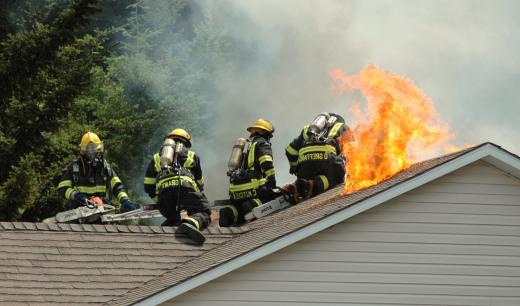A fire safety plan can be one of two related things: it is either an individual strategy outlining what to do in case of a fire, particularly one in the home, or it is a detailed memo outlining a building’s preparedness for a fire emergency, including escape routes, tenant count, sprinkler system connections, and location of hazardous supplies, among other things. Each plan is important in different ways. A more subjective personal escape plan helps people be prepared for a fire emergency. More detailed, fact-based fire safety plans important ways of ensuring public safety and responsible construction.
Most governments require comprehensive fire safety plans both as a part of licensing building operations and in the context of regulating local corporations and building owners. In countries such as the United States, Japan, Canada, much of Europe, and Australia, the government is very invested in ensuring the safety of its citizens and uses the law to mandate fire prevention and evacuation readiness. Construction is highly regulated by either national or local government authorities in these countries.

Laws vary by jurisdiction, but typically include sprinkler and smoke detector requirements, emergency exit specifications, and specific electrical wiring layouts. Builders seeking a permit to begin a new project must generally submit a detailed fire safety plan as a part of their application. This plan must show both an understanding of and an adherence to local regulations, as well as active steps towards fire prevention.

Once these buildings are occupied, a new set of safety standards attach. Building owners, typically businesses or corporations, must maintain certain fire protection standards, and must ensure that the facilities remain up to code. This keeps occupants safe while protecting valuable business assets.
In most places, corporate owners must also file a detailed fire safety plan with their local fire marshal or city council. This plan will act as a blueprint that fire safety officials can use in case of emergency. It must usually include a map of the building with exits and stairwells clearly marked. A rough number of people occupying the space at any given time should also be included, as should a list of any hazardous or combustible materials stored on the premises. Most jurisdictions require building owners to revisit and update their fire safety plans on an annual or bi-annual basis.

The term “fire safety plan” can also be used to describe any subjective plan for individual fire safety. Many families, for instance, create fire safety plans so that children will know what to in case of a house fire. These plans usually involve steps like feeling the door for heat, looking for smoke, and meeting up in a certain place. Schools and employers also create this kind of action plan so that students and employees will know what they should do in case of fire and how to properly evacuate. Fire drills are usually part of this kind of fire safety plan.
